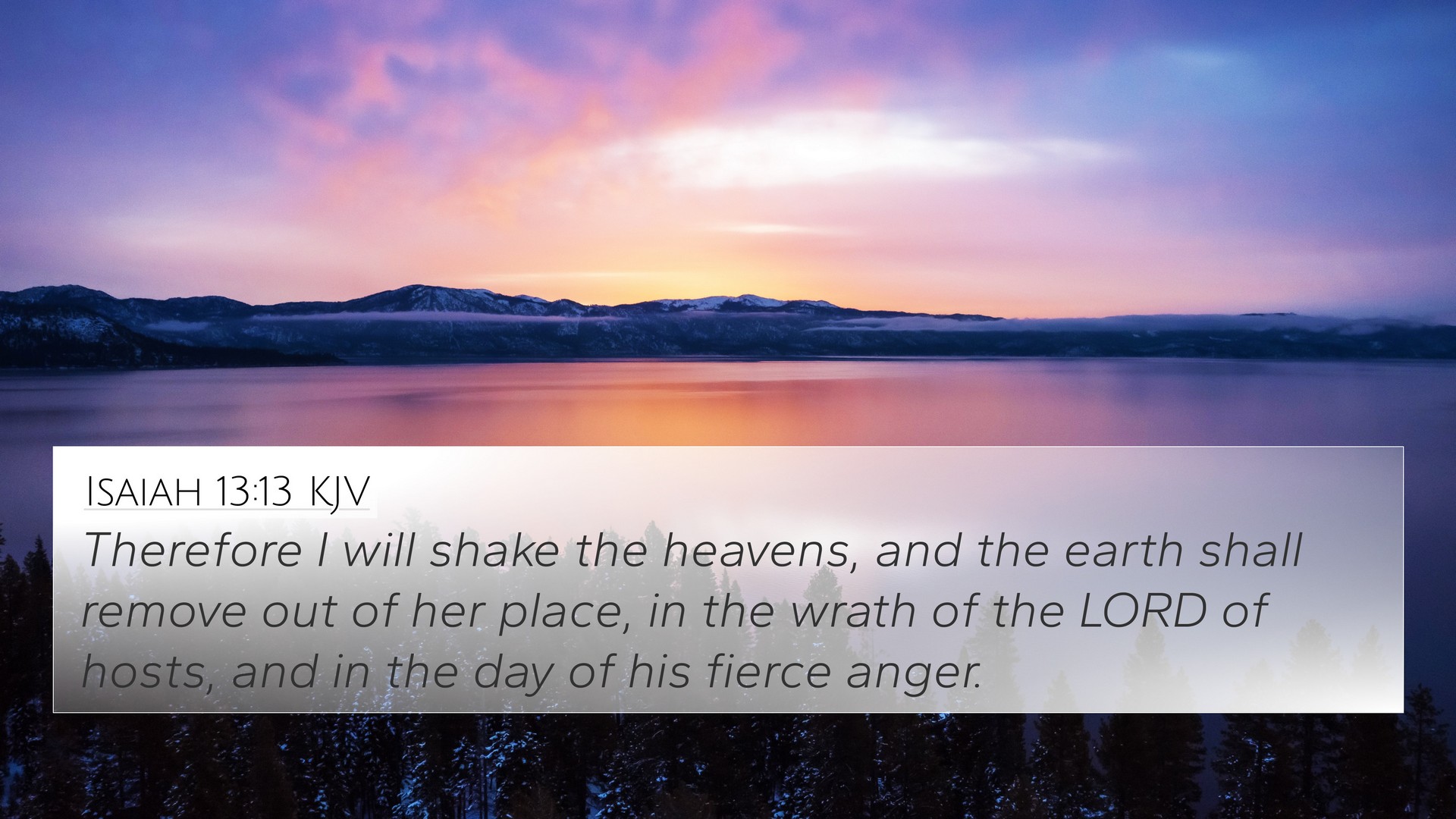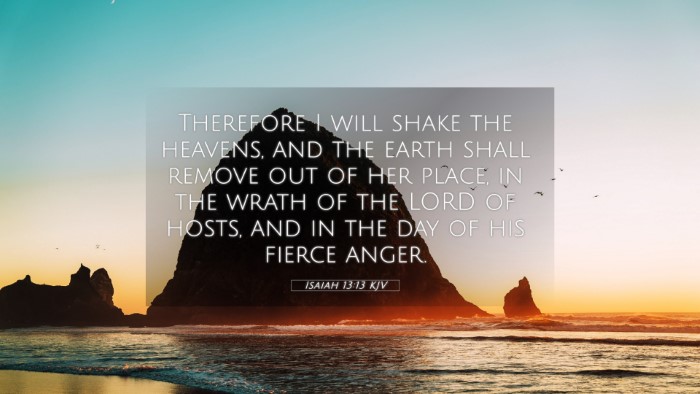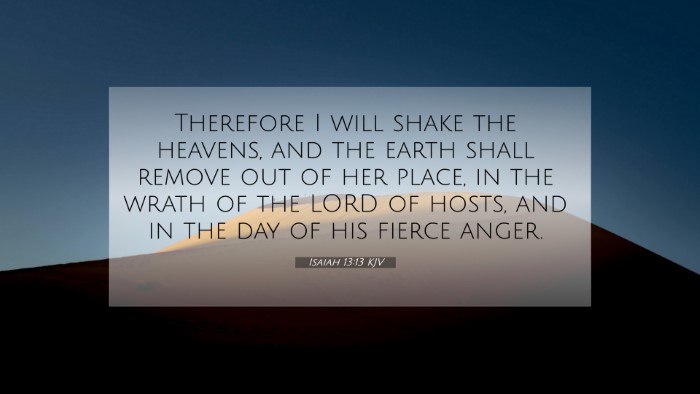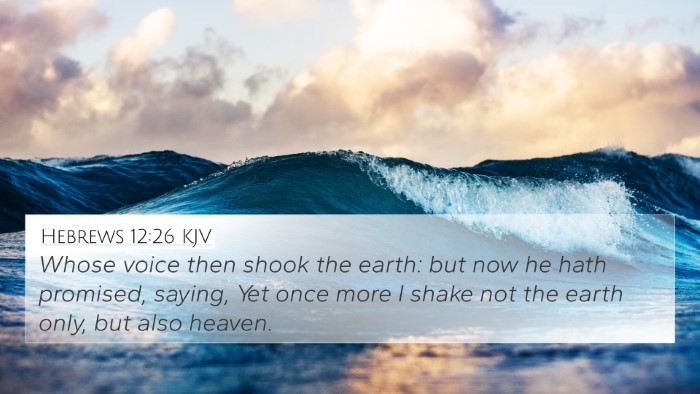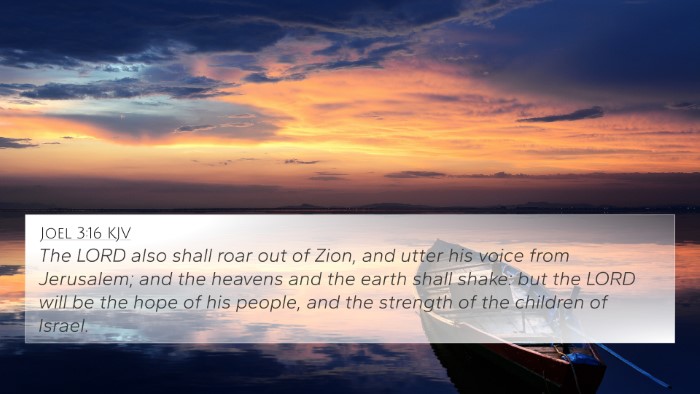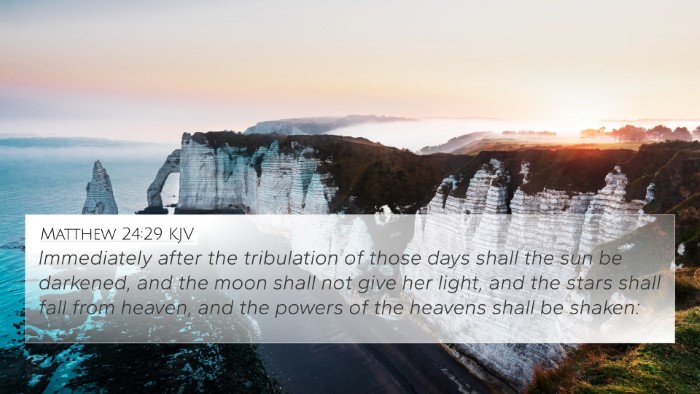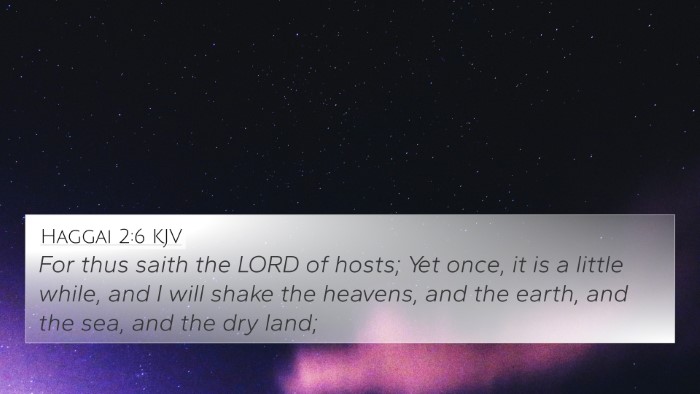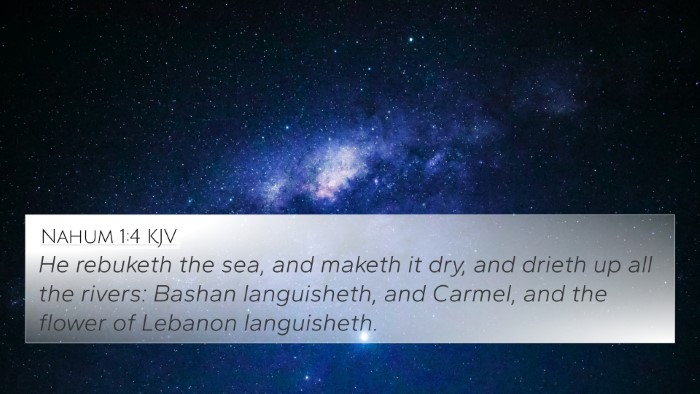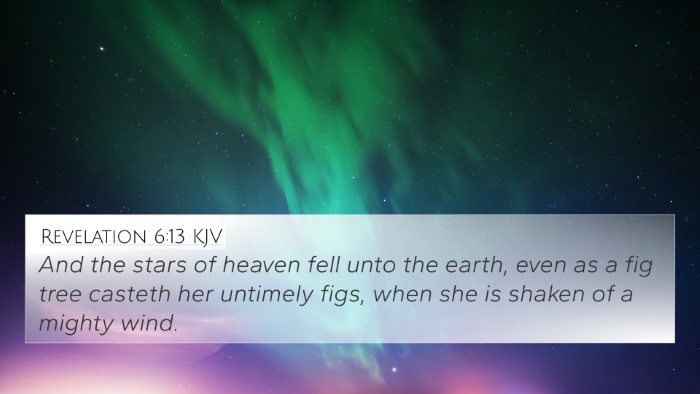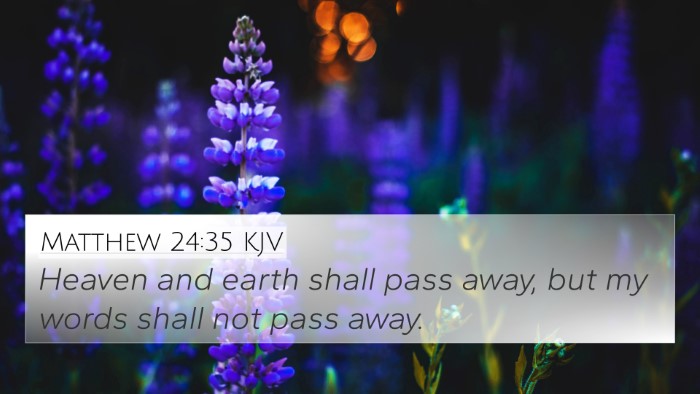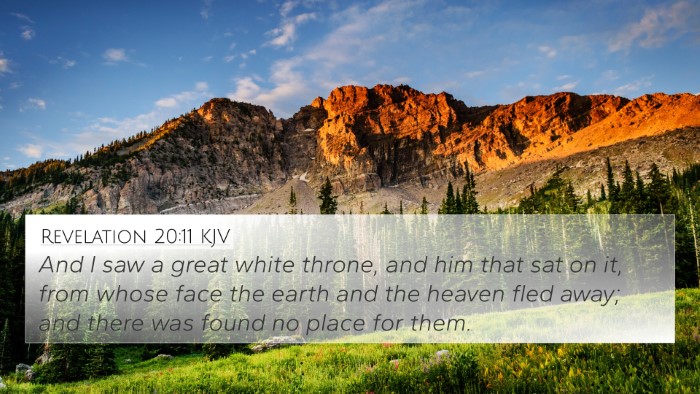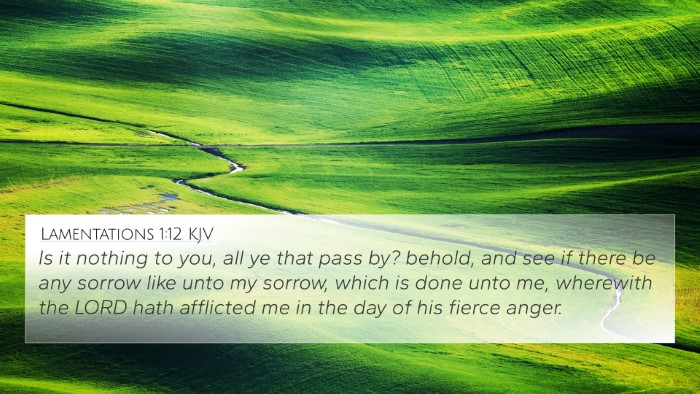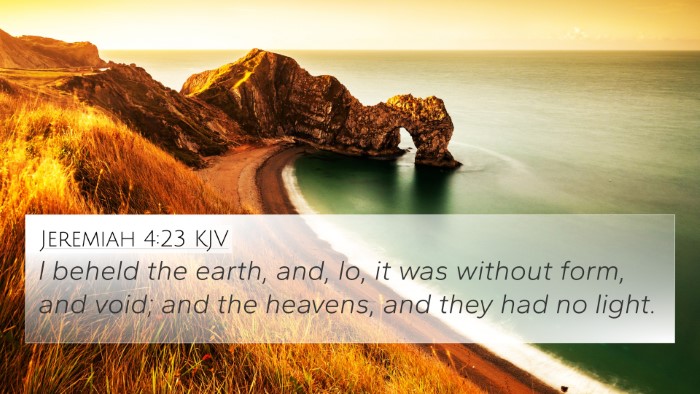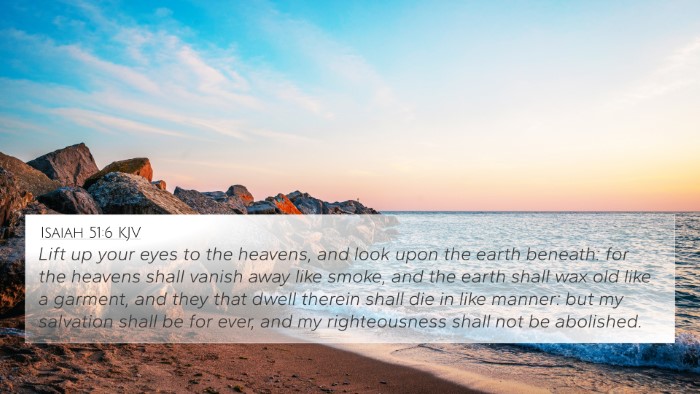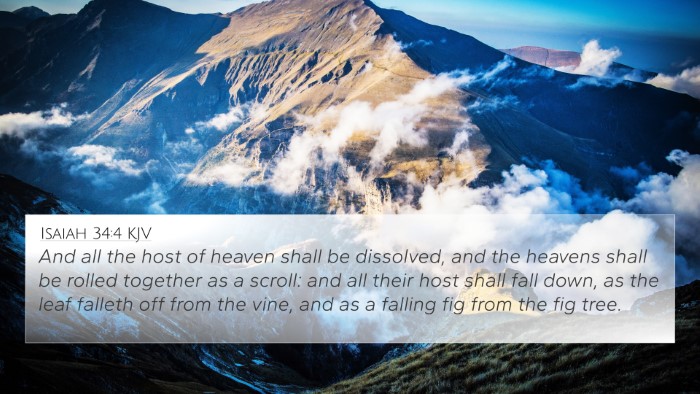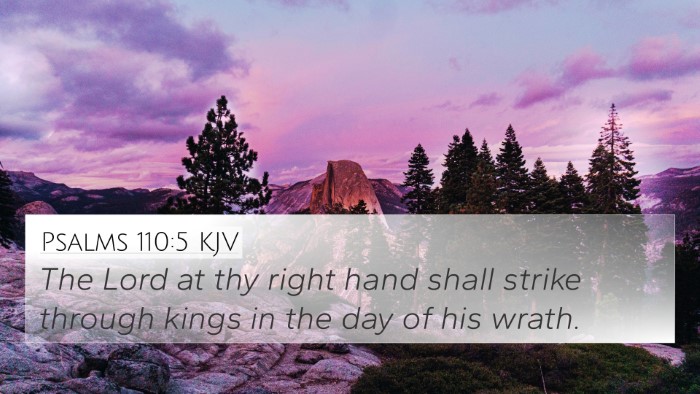Understanding Isaiah 13:13
Isaiah 13:13 reads: "Therefore I will shake the heavens, and the earth shall remove out of her place, in the wrath of the Lord of hosts, and in the day of his fierce anger." This verse is significant in the context of prophetic literature and apocalyptic imagery.
Verse Meaning and Interpretation
The verse expresses God’s divine judgment and the cataclysmic events associated with His anger towards sin and disobedience. God’s act of shaking the heavens and the earth symbolizes a cosmic upheaval that reflects His power and sovereignty. It points to a greater reality: the ultimate establishment of God's Kingdom through the overthrow of His enemies and the renewal of creation.
Insights from Commentaries
-
Matthew Henry:
Henry emphasizes the severity of God's judgment and the certainty of His wrath against the unrighteous. He suggests that the imagery of the heavens and earth shaking is emblematic of God's profound and terrifying power meant to instill fear in the heart of those who oppose Him.
-
Albert Barnes:
Barnes explains that the removal of the earth from its place hints at significant transformations that will occur during the time of divine judgment. He links these events to the impending Babylonian captivity and affirms the prophetic message that God will not leave the guilty unpunished.
-
Adam Clarke:
Clarke provides a broader theological context by likening this verse to the final judgment at the end of times. He notes that this shaking signifies a total transformation and the beginning of a new order, correlating with passages that explore the themes of renewal and restoration.
Related Themes and Connections
The themes present in Isaiah 13:13 link it to several other passages in both the Old and New Testaments, illustrating God's wrath and the transformative nature of His judgment:
- Matthew 24:29-30: The cosmic signs accompanying the return of Christ compare the shaking of the heavens to the disturbances during divine judgments.
- Revelation 6:12-14: The imagery of the heavens departing as a scroll parallels the apocalyptic tone present in Isaiah where God's judgment leads to creation being shaken.
- Hebrews 12:26-27: The shaking of the earth and the heavens is discussed, indicating that God will remove what can be shaken, pointing to a lasting kingdom.
- Amos 8:9: Amos speaks of a day where the sun will go down at noon, similar to the darkening of the heavens God causes in Isaiah’s prophecy.
- Joel 2:31: The reference to the great and terrible day of the Lord signifies judgment and contrasts with restoration, a recurring theme in Isaiah as well.
- Luke 21:25-26: This passage discusses the signs in the heavens that will occur, reaffirming the panic and tumult linked to divine wrath.
- Isaiah 34:4: This verse uses similar imagery of the heavens being rolled up like a scroll, highlighting the finality of judgment against nations.
- Nahum 1:5: The mountains quake at the presence of God, emphasizing His consuming power over creation.
- 2 Peter 3:10: The heavens will pass away with a great noise, and the elements will melt, echoing the themes of destruction and renewal found in Isaiah.
- Romans 8:19-22: The creation itself waits for its redemption, resonating with Isaiah’s promise of final restoration after divine judgment.
Cross-Referencing Biblical Texts
Isaiah 13:13 serves as a critical link in understanding the themes of judgment, redemption, and restoration throughout Scripture. The cross-references above highlight:
- The connections between Bible verses that deal with divine anger and the cosmic consequences of sin.
- How prophets from different periods address similar themes of God's impending judgment and its impact on both creation and humanity.
- The thematic Bible verse connections illustrate the unity of the biblical narrative concerning God's sovereignty over all creation.
- Comprehensive connections across various books enhance our understanding of God's character as both just and merciful.
Tools for Bible Cross-Referencing
For those studying this verse, several tools are essential in exploring cross-references effectively:
- Bible Concordance: This resource helps locate verses based on keywords and thematic connections.
- Bible Cross-Reference Guide: Offers insights into related scriptures and themes.
- Cross-Reference Bible Study: Methods that encourage deeper exploration of correlated passages.
- Bible Chain References: A compilation of verses linked by themes or concepts.
- Comprehensive Bible Cross-Reference Materials: Collections that focus on synoptic themes across testaments.
Conclusion
Isaiah 13:13 stands as a powerful reminder of God’s sovereignty and the reality of His judgment. Understanding its context and related verses not only enriches one’s study but also allows for a fuller appreciation of the biblical message regarding God's ultimate plan for creation. By engaging with the cross-reference system of the Bible, one can uncover profound insights into the inter-Biblical dialogue which reveals the layered complexity of faith and divine justice.
